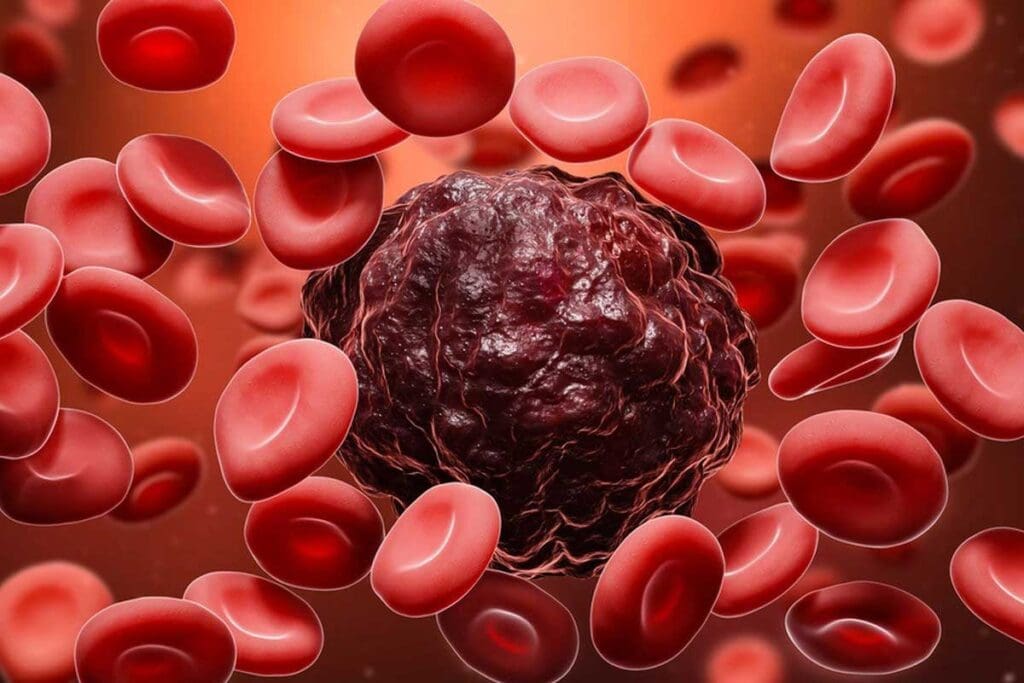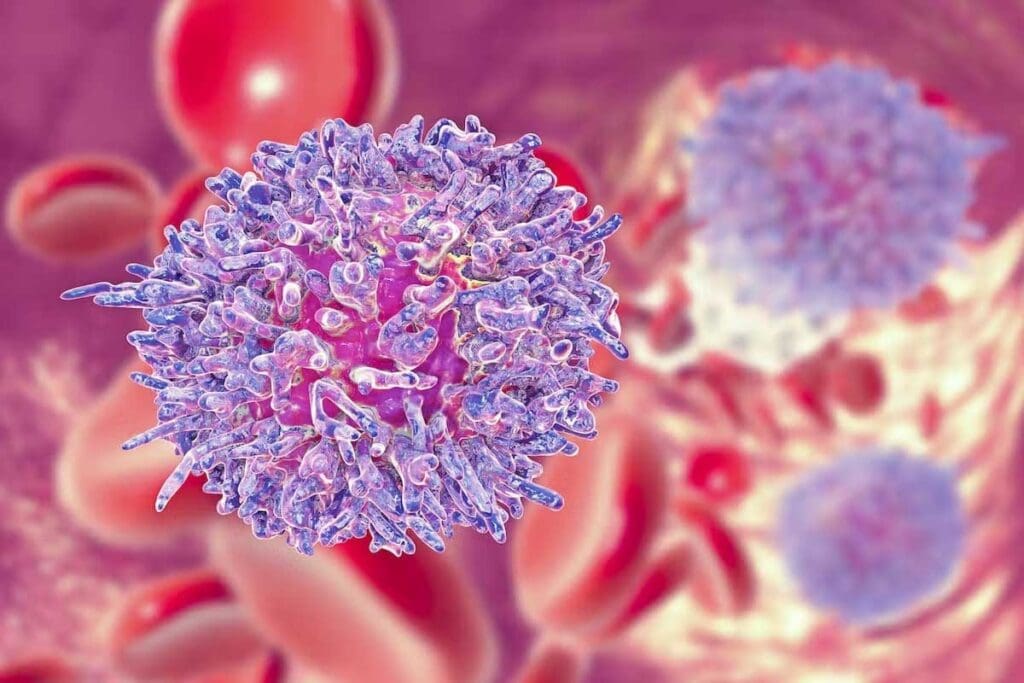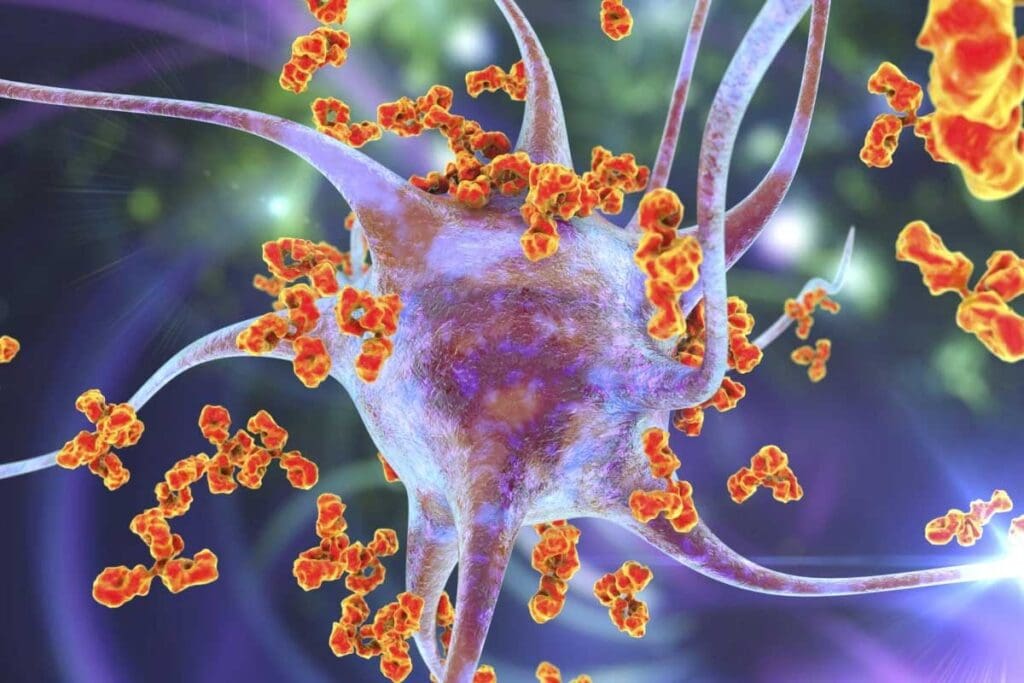Last Updated on November 20, 2025 by Ugurkan Demir

At Liv Hospital, we know how tough a diagnosis of Precursor B Cell Acute Lymphoblastic Leukemia (ALL) can be. This cancer affects the blood and bone marrow. It’s caused by too many immature B cell precursors.
Getting a diagnosis early and using the right treatment is key. This helps manage the condition well.
We’re dedicated to top-notch healthcare. We offer full support to international patients. In this article, we’ll cover seven important facts about Precursor B Cell ALL. We’ll talk about its prognosis and treatment options. This is to help patients and their families make good choices.

Precursor B cell ALL is a type of leukemia. It happens when immature B cell precursors grow too much. These cells take over the bone marrow, pushing out healthy blood cells.
Precursor B cell ALL is known by its specific cell markers. These markers show the cells are from the B cell family. The way we classify ALL has changed with new technology.
The World Health Organization (WHO) helps sort ALL into types. Precursor B cell ALL is identified by certain genetic changes and cell markers.
Key classification criteria include:
Precursor B cell ALL is the most common ALL type, mainly in kids. It makes up a big part of ALL cases, with different rates in different ages and places.
Studies show it mostly affects kids aged 2-5 and adults over 60. It’s a bit more common in boys than girls.
Epidemiological characteristics include:

Precursor B cell ALL starts with the bad change of early B cell starters. This change comes from genetic problems. It messes up B cell growth in the bone marrow, causing bad cells to pile up.
Normal B cell growth needs the right genes to work and the right changes in immunoglobulin genes. But in Precursor B cell ALL, this doesn’t happen right. The bad change stops B cell growth early.
Genetic changes, like problems with the PAX5 gene, often cause this stop. Knowing how this works helps make better treatments.
Genetic issues are key in Precursor B cell ALL. Changes in chromosomes, like translocations and aneuploidy, are common. These changes can tell us a lot about how the disease will act.
These genetic and chromosomal changes affect how the disease acts. They also help doctors decide the best treatment. By finding out what genetic changes are there, doctors can sort patients into groups. This helps make treatments more effective.
Precursor B cell ALL is the most common type of ALL in kids. It’s important to know about this disease in children.
Precursor B cell ALL mostly affects kids between 2 and 5 years old. This shows how young children are at risk for this disease.
The age when kids get this disease is important. Here are some key points:
Knowing these patterns helps doctors find and treat the disease early.
Kids with Precursor B cell ALL have special features. They often have more white blood cells and are more likely to have the disease in their brain.
Thanks to better treatments, kids are doing better. But, doctors need to tailor treatments for kids because of their unique needs.
Comparison of Precursor B cell ALL Characteristics in Different Age Groups
| Characteristics | Pediatric Patients | Adult Patients |
| Peak Incidence Age | 2-5 years | Variable, often older adults |
| White Blood Cell Count at Diagnosis | Often higher | Variable |
| Central Nervous System Involvement | More common | Less common |
| Treatment Outcomes | Generally better | Generally poorer |
In conclusion, Precursor B cell ALL is a big worry in kids’ cancer. Knowing how it affects kids helps doctors find better ways to treat it.
Knowing how Precursor B cell ALL presents is key for early diagnosis and treatment. Symptoms vary by age and disease extent.
Patients with Precursor B cell ALL show non-specific symptoms. These can be like other illnesses, making diagnosis hard. Common symptoms include:
These symptoms come from cancer cells in the bone marrow. They cause bone marrow failure and organ infiltration.
Diagnosing Precursor B cell ALL involves lab tests and bone marrow exams. Important tests include:
Immunophenotyping and molecular testing confirm Precursor B cell ALL diagnosis. They reveal the disease’s genetic traits. These tests help in:
These methods help doctors create personalized treatment plans. This improves patient outcomes.
Risk stratification is key in deciding how intense the treatment should be for patients with Precursor B cell Acute Lymphoblastic Leukemia (ALL). It involves looking at different factors to sort patients into risk groups. This helps choose the right treatment for each patient.
Age is a big factor in risk stratification for Precursor B cell ALL. Pediatric patients usually have a better chance of recovery than adults. Infants under one and teens over 10 are at higher risk among kids. But kids between 1 and 10 tend to do better.
For adults, getting older means a tougher fight against the disease. Older adults often face more complex health issues that make treatment harder.
Genetic and molecular issues are also key in risk stratification. Some genetic features, like the Philadelphia chromosome or MLL gene rearrangements, raise the risk of treatment failure. On the other hand, certain genetic profiles, like high hyperdiploidy or ETV6-RUNX1 fusion, suggest a better outlook.
Advanced tests help find these genetic and molecular markers. This makes it possible to assess risk more accurately.
How well a patient responds to initial treatment is also important. The speed and extent of response to induction therapy predict the outcome. Patients who quickly become minimal residual disease (MRD) negative usually do better than those with ongoing MRD.
Checking MRD levels during treatment helps adjust treatment intensity. This ensures the treatment fits the patient’s needs, improving chances of success in Precursor B cell ALL.
Effective treatment of Precursor B cell Acute Lymphoblastic Leukemia (ALL) needs a tailored approach. We will look at the main treatments for this condition. These treatments are key to a successful outcome.
Induction therapy is the first step in treatment. It aims to get the patient into remission. It uses a mix of chemotherapy drugs like vincristine and corticosteroids.
The goal is to clear leukemia cells from the bone marrow. This helps restore normal blood cell production.
Key Components of Induction Therapy:
After remission, consolidation and maintenance therapy are vital. They aim to get rid of any leftover leukemia cells and stop relapse. Consolidation uses strong chemotherapy, while maintenance is less intense but longer.
| Therapy Phase | Objective | Common Treatments |
| Consolidation | Eliminate residual leukemia cells | High-dose chemotherapy, targeted therapy |
| Maintenance | Prevent relapse | Oral chemotherapy, immunotherapy |
CNS prophylaxis is a key part of Precursor B cell ALL treatment. It involves putting chemotherapy directly into the spinal fluid. Or, it uses high-dose chemotherapy that can reach the brain.
Understanding the standard treatments for Precursor B cell ALL shows the complexity of managing this disease. Tailored treatment plans are vital for the best results and to reduce side effects.
The treatment for Precursor B cell Acute Lymphoblastic Leukemia has changed a lot. New treatments have made managing Precursor B cell ALL better for patients.
CAR T-cell therapy is a new and powerful treatment for Precursor B cell ALL. It takes a patient’s T cells, changes them to fight leukemia, and puts them back in. Studies show it works well for patients who didn’t respond to other treatments.
Getting CAR T-cell therapy involves several steps:
Monoclonal antibodies are also key in treating Precursor B cell ALL. Blinatumomab and Inotuzumab ozogamicin have shown to be effective in studies.
Blinatumomab helps T cells find and kill leukemia cells. It works well for patients with small amounts of leukemia left.
Inotuzumab ozogamicin targets B cells and carries a drug to kill them. It’s a targeted way to treat leukemia.
Stem cell transplantation is important for some patients with Precursor B cell ALL. It’s considered for those with high-risk disease or who have relapsed. The choice depends on several factors, like the patient’s risk, how they first responded to treatment, and if there’s leukemia left.
Stem cell transplantation is suggested for:
Understanding these new treatments helps us see how Precursor B cell ALL is managed today. It shows how we can help patients more.
The outlook for Precursor B Cell Acute Lymphoblastic Leukemia (ALL) changes a lot with age. This change comes from the disease’s biology, how well it responds to treatment, and certain genetic traits.
Children with Precursor B Cell ALL usually do better than adults. Thanks to better treatments, kids have a cure rate over 90%. But, adults, and those over 60 in particular, have much lower survival chances.
There are many reasons for this difference. It includes the leukemia’s biology, how well kids and adults can handle strong chemotherapy, and health issues in older adults.
Genetic changes are key in predicting how well Precursor B Cell ALL will do. Some genetic issues, like the Philadelphia chromosome-positive ALL, used to mean a worse outlook. But, new treatments have made things better for these patients.
Other genetic factors, like high hyperdiploidy and certain molecular types, also affect how well a patient will do. Knowing these genetic traits helps doctors plan the best treatment.
Thanks to better treatments, more people with Precursor B Cell ALL are living longer. But, they might face problems later, like heart disease, new cancers, and brain issues.
Doctors are working hard to reduce these long-term side effects without lowering cure rates. They’re exploring new, less harsh treatments and drugs that target specific genes.
Improving the life of long-term survivors is also key. This includes not just medical care but also mental health support and managing late effects.
Managing relapsed and refractory Precursor B cell ALL needs a detailed plan to help patients. Relapse happens when leukemia comes back after treatment. Refractory disease doesn’t respond to treatment. Both are big challenges in treating patients.
Finding relapse early is key for quick action. Tests like complete blood counts and bone marrow exams are vital. Immunophenotyping and molecular tests also help track disease and treatment success.
When relapse is found, doctors check how much disease is back and look for genetic changes. This helps decide the best treatment. Checking for minimal residual disease (MRD) is also important for better risk planning.
Relapsed Precursor B cell ALL treatment often starts with chemotherapy again. Then, consolidation therapy and possibly stem cell transplant follow. Treatment choices depend on how long the patient was in remission, age, and health.
New treatments like CAR T-cell therapy and monoclonal antibodies like blinatumomab are showing promise. Ongoing trials are checking their safety and effectiveness.
| Treatment Approach | Description | Potential Benefits |
| CAR T-cell Therapy | Immunotherapy involving genetically modified T-cells | High response rates in heavily pretreated patients |
| Blinatumomab | Monoclonal antibody that targets CD19 and CD3 | Effective in inducing remission in relapsed/refractory patients |
| Stem Cell Transplantation | Hematopoietic stem cell transplant from a donor | Potential for long-term disease control |
For refractory Precursor B cell ALL, new treatments are being tried. These include combining new drugs with old ones and using new methods like bispecific antibodies and gene therapy.
Going into clinical trials is often advised for these patients. It gives them access to the latest treatments that might help more.
Precursor B cell Acute Lymphoblastic Leukemia is a complex disease. It needs a detailed approach to manage it well. We’ve talked about seven key facts about it, like its definition, treatment options, and how it’s likely to progress.
As we look ahead, new treatments like CAR T-cell therapy and monoclonal antibodies will help more patients. These advancements are expected to make treatments better for those with Precursor B cell ALL.
At Liv Hospital, we’re all about top-notch healthcare. We offer full support and guidance to international patients. Our team works hard to keep up with the latest medical breakthroughs. This way, our patients get the best treatments for Precursor B cell ALL and other diseases.
The future for managing Precursor B cell ALL is bright. Research is ongoing to find new treatments and ways to support patients. We believe these efforts will lead to better survival rates and a better quality of life for those affected.
Precursor B cell acute lymphoblastic leukemia (ALL) is a blood and bone marrow cancer. It happens when immature B cell precursors grow too much.
Signs include fever, fatigue, bleeding, and bone pain. The symptoms can change based on the patient’s age and how far the disease has spread.
Doctors use tests like lab work, bone marrow exams, and special tests to find immature B cell precursors in the bone marrow.
Risk stratification helps find patients at high risk of relapse or treatment failure. It looks at age, genetic factors, and how well the patient responds to treatment.
Treatment includes chemotherapy, targeted therapy, and supportive care. It includes induction, consolidation, and maintenance therapy, plus central nervous system prophylaxis.
CAR T-cell therapy is a new treatment for relapsed or refractory Precursor B cell ALL. It has greatly improved patient outcomes.
Children usually have better outcomes than adults. But, genetic factors and other factors can affect the prognosis.
For relapsed patients, treatments include CAR T-cell therapy, monoclonal antibodies, and stem cell transplantation. The choice depends on the individual case.
Genetic abnormalities can greatly affect outcomes in Precursor B cell ALL. They influence treatment choices and prognosis.
Pre-B ALL, or Precursor B cell acute lymphoblastic leukemia, is a subtype of ALL. It is characterized by immature B-cell precursors in the bone marrow.
Prognosis varies based on age, genetic factors, and treatment response. Children generally have a better prognosis than adults.
Subscribe to our e-newsletter to stay informed about the latest innovations in the world of health and exclusive offers!